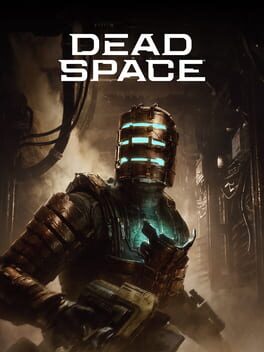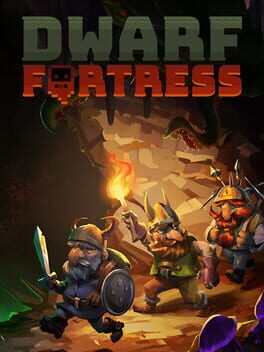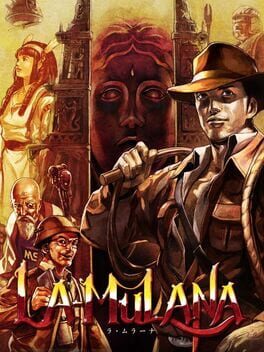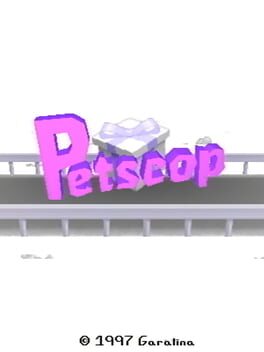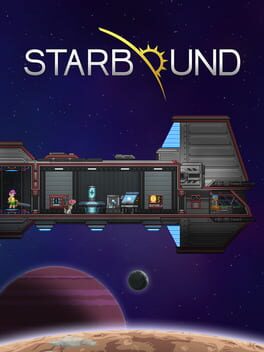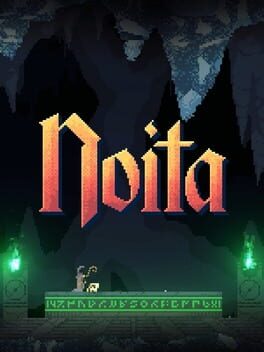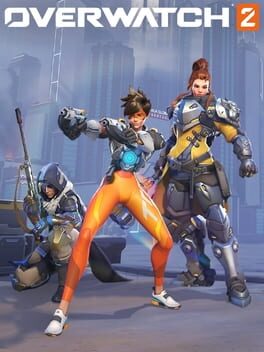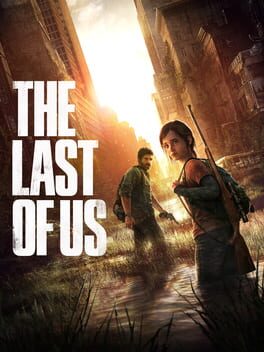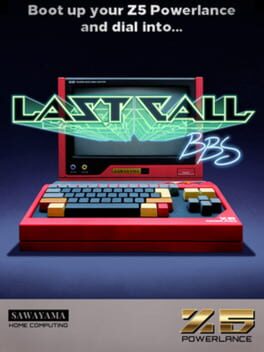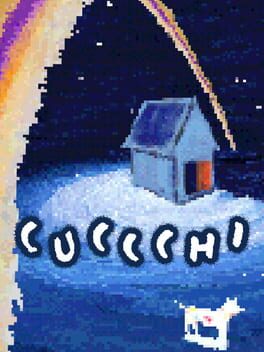iznaroth
68 Reviews liked by iznaroth
Hollow Knight
2017
Hollow Knight thrives off of a combat system that ties pretty seamlessly into the exploration. Just by hitting a wall, you'll find yourself in a new area with several bosses/minibosses and usually they are all pretty solid. That's unfortunately about where my praise ends however, because although I respect its ambition, I feel it suffers from several choices that hinder both the combat and exploration elements that should naturally tie together.
Exploration-focused games usually go for relatively guided level design. Even if the world design itself is non-linear and lets you go anywhere, rooms will maintain a guided format because it allows the designer to add interesting trails to fall down. Going down into a new area off of a winding trail as the visuals slowly change and you have to interact with new mechanics is practically formula at this point for these types of games. Hollow Knight instead applies this philosophy to the entire map at large; where areas are effectively trails to other areas and that serves as their purpose. Ambitious in theory but troubling in execution; you will find that most areas effectively play out like big open boxes with a few mazes of blocks and samey rooms inside. Gimmicks are often relegated to extremely simple changes to the formula that don't compensate for the sheer amount of aimless wandering through repetitive, unfocused level design. If it's not an area you find in a wall, it's a generic item that isn't an actual upgrade and has very little gameplay purpose.
The progression of Hollow Knight is very weak overall to me; whereas Metroid-likes usually like to give you items for every milestone that would lead you being able to go back and open up a new area, Hollow Knight oft abandons the notion of backtracking because so much of it is open from the get-go. Abilities are spread out across hours of play and usually most of the most engaging parts of the game (the bosses) don't give you them and instead are just there to add clutter to the world. Now, in defense of the game, the boss fights are above average for sure. Snappy, fast combat that doesn't over-rely on tired tropes in action-platformers is satisfying to pull off and there's decent variety, but they don't feel meaningful. The fact is you'll probably in the end get more mileage out of random enemies rather than half of the optional bosses in this game since your most effective and active progression you'll be having is collecting Geo; the currency of Hallownest. The best way to collect Geo, is to farm respawning enemies. And there-in lies the issue with Hollow Knight. For a game with such scope and ambition, nothing feeds into another. You get currency to get trivial upgrades while sitting around to get the big cool abilities and fight optional bosses which more often than not give you absolutely nothing. I'm not opposed to a game being fundamentally unrewarding, but I'm opposed to it when all I have are blue mazes to explore. There's another game about blue mazes that released four decades ago, but at least that one has space dinosaurs.
Exploration-focused games usually go for relatively guided level design. Even if the world design itself is non-linear and lets you go anywhere, rooms will maintain a guided format because it allows the designer to add interesting trails to fall down. Going down into a new area off of a winding trail as the visuals slowly change and you have to interact with new mechanics is practically formula at this point for these types of games. Hollow Knight instead applies this philosophy to the entire map at large; where areas are effectively trails to other areas and that serves as their purpose. Ambitious in theory but troubling in execution; you will find that most areas effectively play out like big open boxes with a few mazes of blocks and samey rooms inside. Gimmicks are often relegated to extremely simple changes to the formula that don't compensate for the sheer amount of aimless wandering through repetitive, unfocused level design. If it's not an area you find in a wall, it's a generic item that isn't an actual upgrade and has very little gameplay purpose.
The progression of Hollow Knight is very weak overall to me; whereas Metroid-likes usually like to give you items for every milestone that would lead you being able to go back and open up a new area, Hollow Knight oft abandons the notion of backtracking because so much of it is open from the get-go. Abilities are spread out across hours of play and usually most of the most engaging parts of the game (the bosses) don't give you them and instead are just there to add clutter to the world. Now, in defense of the game, the boss fights are above average for sure. Snappy, fast combat that doesn't over-rely on tired tropes in action-platformers is satisfying to pull off and there's decent variety, but they don't feel meaningful. The fact is you'll probably in the end get more mileage out of random enemies rather than half of the optional bosses in this game since your most effective and active progression you'll be having is collecting Geo; the currency of Hallownest. The best way to collect Geo, is to farm respawning enemies. And there-in lies the issue with Hollow Knight. For a game with such scope and ambition, nothing feeds into another. You get currency to get trivial upgrades while sitting around to get the big cool abilities and fight optional bosses which more often than not give you absolutely nothing. I'm not opposed to a game being fundamentally unrewarding, but I'm opposed to it when all I have are blue mazes to explore. There's another game about blue mazes that released four decades ago, but at least that one has space dinosaurs.
Dead Space
2023
General mix of nausea trying to see this on its own terms versus what the series means for me. I'm moreso feeling to judge towards the latter considering that the game is seeking to be more replacing than going in its own direction, albeit you can still buy the first game on any market for cheap, it's not that sunset, so maybe that's a little mean?
Regardless though, I got about to chapter 5 before I stopped. Then got increasingly upset about it. Positives first it's like, a more competent horror in terms of visual design and understanding of its gore and shock. Genuinely better at pacing its atmosphere than the original, which is something I didn't think I'd find myself saying. I think a lot of that is simply by the original's design, as they couldn't get as visceral with the lighting or do most of the effects presented here, and said lighting back then in gen 7 now looks significantly aged worse even within its context. Dead Space 2 sidelines this entirely by going for a way better fusion with its pocket city meets infection, but still, credit where it's due the devs here's very clearly first project with a game of this kind of tone is firing very well here.
Everything ends there though. The big massive elephant in the room is how Dead Space Remake plays. I think it'd be really really silly to not acknowledge that Dead Space by Clear Intent explicitly and by result is influenced by Resident Evil 4. The OG and especially Dead Space 2 took this influence to give incredibly threatening enemies that were built around a toolset you had properly balanced to deal with them. You manipulated their enemy state between terrifying rush mode and kiting them together so you can get shots in while faster and more difficult incarnations came around the corner later. This significantly added to that horror, the necromorphs were very much abominations that gruesomely formed from humanity and their feral instinctual power that you had to manage and keep your distance especially with their erraticism was The defining factor.
But here? They're entirely defanged. This is utterly indefensible to me. The AI for lack of a better word is total dogshit. They'll constantly, CONSISTENTLY, revert to an idle state both after sprinting or even in the middle of attacks. They're boring, reduced in a manner similar to xenomorphs from Alien to Aliens, their threat deorbited to be replaced by, well, nothing. You're far more powerful too, weapon hitboxes have been so overtuned to where flamethrower just disintegrates now, as an example. Your stomp hitbox is so laughably huge that it brought me out of the game hard. I went through the entirety of chapter 4 trying to see how much I could get by just stomping enemies to death. I succeeded and that was depressing. I'm playing this game on Hard btw, and I've actually never been quite able to power through the original's hardest difficulties. I'm not that good at Dead Space. This remake really is just that toothless.
And that's astonishing to me. This is a remake set to be a powerful recognizable spirit of the original, with an uncharitable doctrine towards its coming entirely because EA still absolutely sunset the original devs with prejudice. But its roots, they're gone! They're not even a part of the equation here. I found playing this less interesting and engaging from a mechanical standpoint than Dead Space 3 and that in of itself is also something I never wished I had to say.
I don't know. On its own terms, I think it's largely understandable that people are seeing this from a nu-standpoint where they, likely honestly, never played the original. Simply observed it from its marketing and its dominating horror appeal and came in hoping to be blown away by that part of things. Which is there. That part is not, like, missing. This is in some sense a strongly competent horror walking sim of sorts (yeah i know, levels are still nonlinear, you still kind of fight things, but it's obviously not the point anymore). Difficult for me to internalize that though. The legacy I loved the series for is gone. I'm not very good with horror games exclusively, I loved Dead Space largely for how its monsters were analogous to the horror and forced me to feel things intrinsically through gameplay. I loved that something something ludonarrative. I liked the power and actualization of accomplishing past these terrible monsters, going through with wounds and scars and feeling like I really just lived through a stone cold hell.
Not here though. Dead Space has moved on. Maybe we should too.
Regardless though, I got about to chapter 5 before I stopped. Then got increasingly upset about it. Positives first it's like, a more competent horror in terms of visual design and understanding of its gore and shock. Genuinely better at pacing its atmosphere than the original, which is something I didn't think I'd find myself saying. I think a lot of that is simply by the original's design, as they couldn't get as visceral with the lighting or do most of the effects presented here, and said lighting back then in gen 7 now looks significantly aged worse even within its context. Dead Space 2 sidelines this entirely by going for a way better fusion with its pocket city meets infection, but still, credit where it's due the devs here's very clearly first project with a game of this kind of tone is firing very well here.
Everything ends there though. The big massive elephant in the room is how Dead Space Remake plays. I think it'd be really really silly to not acknowledge that Dead Space by Clear Intent explicitly and by result is influenced by Resident Evil 4. The OG and especially Dead Space 2 took this influence to give incredibly threatening enemies that were built around a toolset you had properly balanced to deal with them. You manipulated their enemy state between terrifying rush mode and kiting them together so you can get shots in while faster and more difficult incarnations came around the corner later. This significantly added to that horror, the necromorphs were very much abominations that gruesomely formed from humanity and their feral instinctual power that you had to manage and keep your distance especially with their erraticism was The defining factor.
But here? They're entirely defanged. This is utterly indefensible to me. The AI for lack of a better word is total dogshit. They'll constantly, CONSISTENTLY, revert to an idle state both after sprinting or even in the middle of attacks. They're boring, reduced in a manner similar to xenomorphs from Alien to Aliens, their threat deorbited to be replaced by, well, nothing. You're far more powerful too, weapon hitboxes have been so overtuned to where flamethrower just disintegrates now, as an example. Your stomp hitbox is so laughably huge that it brought me out of the game hard. I went through the entirety of chapter 4 trying to see how much I could get by just stomping enemies to death. I succeeded and that was depressing. I'm playing this game on Hard btw, and I've actually never been quite able to power through the original's hardest difficulties. I'm not that good at Dead Space. This remake really is just that toothless.
And that's astonishing to me. This is a remake set to be a powerful recognizable spirit of the original, with an uncharitable doctrine towards its coming entirely because EA still absolutely sunset the original devs with prejudice. But its roots, they're gone! They're not even a part of the equation here. I found playing this less interesting and engaging from a mechanical standpoint than Dead Space 3 and that in of itself is also something I never wished I had to say.
I don't know. On its own terms, I think it's largely understandable that people are seeing this from a nu-standpoint where they, likely honestly, never played the original. Simply observed it from its marketing and its dominating horror appeal and came in hoping to be blown away by that part of things. Which is there. That part is not, like, missing. This is in some sense a strongly competent horror walking sim of sorts (yeah i know, levels are still nonlinear, you still kind of fight things, but it's obviously not the point anymore). Difficult for me to internalize that though. The legacy I loved the series for is gone. I'm not very good with horror games exclusively, I loved Dead Space largely for how its monsters were analogous to the horror and forced me to feel things intrinsically through gameplay. I loved that something something ludonarrative. I liked the power and actualization of accomplishing past these terrible monsters, going through with wounds and scars and feeling like I really just lived through a stone cold hell.
Not here though. Dead Space has moved on. Maybe we should too.
Dead Space
2023
This review was written before the game released
Bold of EA to, after completely gutting Dead Space to turn it into a garbled action mess of predatory bullshit and then completely gutting the studio behind it after jobbing them onto a shitty battlefield spin-off, come back and act like I should give a shit that they are propping up it's corpse because horror is noticeably profitable now
Honestly, go fuck yourself
Honestly, go fuck yourself
Dwarf Fortress
2022
Leyfir að Knúsabróðir, Scribe, has created Léirmheas, a digital video game review! He offers it to the Room of Riaráiste.
[OK]
[OK]
La-Mulana
2012
Modern videogame design sensibilities dictate that a good videogame should always telegraph in advance the presence of traps, because trial and error is inherently a frustrating endeavor that doesn't give the player the opportunity to overcome the odds and be rewarded for it. It states that subjecting the player to long stretches of backtracking and being lost without knowing where to go is a sign of poor game structure, bad pacing and lazy level design that does not do enough to inform the player on how to play the game. It also suggests that required puzzle solving that gates progression should be easily understood as such and shouldn't be obtuse, elusive and hidden into the background in such a manner that in order to figure it out you must remember a hint you misinterpreted as flavor lore text 10 hours ago.
La-Mulana's ability to repeatedly laugh and spit in the face of what the collective videogame machine has evolved into over the years is the game's ultimate defining characteristic and statement, and while clearly inspired by retro classics of old, its meticulous and labored world map combined with an insurmountable obsession with lateral thinking puzzle solving makes it stand out as a one of kind experience in the medium that is as new and fresh as playing Demon's Souls for the first time in 2009. Indifferent to whatever whims the common player might bring into it, stages are never truly beaten, simply becoming part of an ever increasing tapestry of interconnected threads left hanging until the very last moments of the credits, and as you quickly realize the importance of details and minutia you have been conditioned to ignore by years of gaming, La-Mulana gains a level of dimensionality to its deceptive sidescrolling origins that turn most 3D ventures into cardboard cut-out playgrounds in comparison.
La-Mulana is definitely unfair, but it is so by design. And that unfairness is easily appreciated when it constantly displays a clear labor of love and wonderment for the unique power of discovery and conquest videogames excel at, utilizing its cruelty to exploit comedy out of the player's expense and turning every small note taking, picture drawing and logical leap of faith into a victory for the unlimited human ingenuity and perseverance. Even if you find yourself abusing an online guide, it is worth taking the La-Mulana journey, if only to see how every dungeon feeds into each other and witness the absurd mental gymnastics the game requests of your wellbeing. When the final puzzle brough me all the way back to one of the first brain teasers in the game, I reached nirvana. And I'm not ashamed to say it, I soyfaced.
Completing La-Mulana without a guide must be akin to surviving a Vipassana meditation retreat, a life changing religious experience that fundamentally shifts the way you perceive the world around you. In order to do so, you just have to get past your biggest misgivings as a human being, learn to shut off the white noise in your brain, accept the uncomfortableness of your body and mind, and bash your head into a indecipherable stone mural with retractable spikes that knock you 2 meters back into a pit you have to climb back from again while you heavily breathe in and breath out.
One day, La-Mulana 2.
La-Mulana's ability to repeatedly laugh and spit in the face of what the collective videogame machine has evolved into over the years is the game's ultimate defining characteristic and statement, and while clearly inspired by retro classics of old, its meticulous and labored world map combined with an insurmountable obsession with lateral thinking puzzle solving makes it stand out as a one of kind experience in the medium that is as new and fresh as playing Demon's Souls for the first time in 2009. Indifferent to whatever whims the common player might bring into it, stages are never truly beaten, simply becoming part of an ever increasing tapestry of interconnected threads left hanging until the very last moments of the credits, and as you quickly realize the importance of details and minutia you have been conditioned to ignore by years of gaming, La-Mulana gains a level of dimensionality to its deceptive sidescrolling origins that turn most 3D ventures into cardboard cut-out playgrounds in comparison.
La-Mulana is definitely unfair, but it is so by design. And that unfairness is easily appreciated when it constantly displays a clear labor of love and wonderment for the unique power of discovery and conquest videogames excel at, utilizing its cruelty to exploit comedy out of the player's expense and turning every small note taking, picture drawing and logical leap of faith into a victory for the unlimited human ingenuity and perseverance. Even if you find yourself abusing an online guide, it is worth taking the La-Mulana journey, if only to see how every dungeon feeds into each other and witness the absurd mental gymnastics the game requests of your wellbeing. When the final puzzle brough me all the way back to one of the first brain teasers in the game, I reached nirvana. And I'm not ashamed to say it, I soyfaced.
Completing La-Mulana without a guide must be akin to surviving a Vipassana meditation retreat, a life changing religious experience that fundamentally shifts the way you perceive the world around you. In order to do so, you just have to get past your biggest misgivings as a human being, learn to shut off the white noise in your brain, accept the uncomfortableness of your body and mind, and bash your head into a indecipherable stone mural with retractable spikes that knock you 2 meters back into a pit you have to climb back from again while you heavily breathe in and breath out.
One day, La-Mulana 2.
Petscop
TBD
Starbound
2016
Noita
2020
Overwatch 2
2022
GuessTheGame
2022
The Last of Us
2013
Last Call BBS
2022
Like many a Zachtronics game before, Last Call BBS has that secret ingredient to create a great puzzle format: arbitrary limitation.
Perhaps intentionally, the computer you are using only has enough disk space to download 7 programs, most of which have their own limitation. For ChipWizard and Food Court, the limit was simply workspace, a pretty common trope for Zachtronics, although for Food Court there are two ways space is restricted. For X'BPGH, interestingly, it was time (as displayed through stages of growth). There was also an instruction limit, but I don't think I ever ran out of space for instructions.
For the others, there might not be any clear limitation. Kabufuda cards existed before Last Call BBS, but I don't know if Kabufuda Solitaire existed. The free spaces certainly had increasing limits with higher difficulty. Dungeons & Diagrams had restrictions for block placement, but that's not really unusual for a logic puzzle (in fact a lot of the rules carry over from a logic puzzle known as Tapa). Steed Force could be considered to have a quite limited variety of tools for painting Gundam-like figures. HACKMATCH might not even qualify.
I'd be remiss not to mention some of these games had their first appearance in a previous Zachtronics game. A nearly identical version of Kabufuda Solitaire was present in Eliza. A fairly similar version of HACKMATCH in EXAPUNKS. ChipWizard's first incarnation was KOHCTPYKTOP, released all the way back in 2009 as a flash game. There may be others that I don't know about.
And I think the narrative that played out through memos from the relative who had donated the Z5 Powerlance to the player hints towards a past where arbitrary restrictions were not an option, they were reality. Graphics were limited to smaller resolutions, smaller budgets, smaller memory allocation, and smaller, closer-knit (more closely knit?) communities who came together to play these games and just chat.
The world's a lot bigger than it was when Zachtronics began. Things move faster. LC makes you wait when downloading a game, although the files of the game were all loaded up upon booting up Last Call BBS on Steam. It might've taken you less time to download LC than it took to download any game within it.
I don't think Zach Barth was trying to communicate there is no place for Zachtronics anymore, or that he was out of ideas. I think he just had a good idea of where he wanted to stop.
Perhaps intentionally, the computer you are using only has enough disk space to download 7 programs, most of which have their own limitation. For ChipWizard and Food Court, the limit was simply workspace, a pretty common trope for Zachtronics, although for Food Court there are two ways space is restricted. For X'BPGH, interestingly, it was time (as displayed through stages of growth). There was also an instruction limit, but I don't think I ever ran out of space for instructions.
For the others, there might not be any clear limitation. Kabufuda cards existed before Last Call BBS, but I don't know if Kabufuda Solitaire existed. The free spaces certainly had increasing limits with higher difficulty. Dungeons & Diagrams had restrictions for block placement, but that's not really unusual for a logic puzzle (in fact a lot of the rules carry over from a logic puzzle known as Tapa). Steed Force could be considered to have a quite limited variety of tools for painting Gundam-like figures. HACKMATCH might not even qualify.
I'd be remiss not to mention some of these games had their first appearance in a previous Zachtronics game. A nearly identical version of Kabufuda Solitaire was present in Eliza. A fairly similar version of HACKMATCH in EXAPUNKS. ChipWizard's first incarnation was KOHCTPYKTOP, released all the way back in 2009 as a flash game. There may be others that I don't know about.
And I think the narrative that played out through memos from the relative who had donated the Z5 Powerlance to the player hints towards a past where arbitrary restrictions were not an option, they were reality. Graphics were limited to smaller resolutions, smaller budgets, smaller memory allocation, and smaller, closer-knit (more closely knit?) communities who came together to play these games and just chat.
The world's a lot bigger than it was when Zachtronics began. Things move faster. LC makes you wait when downloading a game, although the files of the game were all loaded up upon booting up Last Call BBS on Steam. It might've taken you less time to download LC than it took to download any game within it.
I don't think Zach Barth was trying to communicate there is no place for Zachtronics anymore, or that he was out of ideas. I think he just had a good idea of where he wanted to stop.
Cuccchi
2021
I've been to a lot of museums since covid "ended". It's interesting to see how they've all spent the two-year timeskip adapting and updating their layouts to accommodate for the wants and needs of the 2020s, fighting to stay relevant in a world where you can type "Cezanne" into your phone and have a gallery in your hand within seconds. Regardless of whether you visit a portrait gallery or a modern art space, there seems to be a universal focus on "Instagrammable" moments: extending art beyond the frame and allowing it to occupy enough physical space for a cool selfie or 15-second clip that you can cryptically share with the internet to increase your various clout scores. I'm not opposed to the idea, really - museums have to evolve or die, and I've seen creative takes on Van Gogh and Picasso pieces that are probably helping people think about those artists in ways they can relate to and understand in the present. But it is very funny that the Barcelona Museum of Contemporary Art has an "Instagram usher" whose sole job is to stop people turning Basquiat light shows into their own personal photo studio, perhaps belying the fact that some people aren't necessarily there to look at anything but themselves.
My favourite of these new installations is probably FRIDA KAHLO: The life of an icon at the Centre d'Arts Digitals. (Funny that every clip of the exhibition has someone taking photos with their phone, right?) It's essentially just a massive warehouse full of projectors and props, but it serves as a fusion reactor for a number of digital artforms, combining huge images, CGI, music, soundscapes and physical space to tell the life story of Frida Kahlo and her work in a more immediately relatable way than going up to description plates next to a glass-protected painting in a big old hall and "hmmmmm"ing to yourself about dates and times and names; by walking down halls and seeing light-life form and respond to your movement, you get a chance to walk in step with the artist in a whole new way.
The problem with these installations, of course, is that you need to be in the one particular spot on the planet where they're happening in order for them to work. You can't study them from the comfort of your home as you could a photograph of a painting or sculpture or video. KID A MNESIA EXHIBITION, an installation similar to Frida's, was meant to happen in London last year - but it had to be called off due to the continuing complications of covid. The creative solution to that problem was for Radiohead to partner up with Epic Games and recreate the installation as a "video game" you could download from the same place you get Fortnite and Rocket League - perhaps not a museum space your parents would visit, but regardless I think it's fair to say this digital alternative was a success, a new kind of experience that people would like to feel more of.
Cuccchi is another such experience, and it's interesting in so far as it's basically the same thing as KID A but for a physical space that has never existed. Step through Enzo Cucchi's art in a new kind of "high-fidelity", a whirlwind gallery that makes the paint move on your behalf and infers meaning through smart music cues. ("Why aren't you painting? To me, this scene is beyond belief!") Unsurprised to see VGV make a personal cameo here - it's fair to say a lot of this exhibition takes inspiration from paintings like The Starry Night and Wheat Field with Cypresses, to the point where I felt like Marty Scorsese in those plains of wheat. Borders on trascendent, but there were a few moments where I found myself bumping up against invisible walls that broke my flow - ever had that happen at a museum? The inclusion of annoying little ghosts and skulls who can damage you was hardly welcome, either - imagine you went to the Picasso Museum and there were dudes chasing you around with pointy sticks while you were trying to look at the paintings, a dream and someone turned it into a nightmare! The National Portrait Gallery on "Ultra-Violence" difficulty?! No thank you! Although there's a novelty to visiting the world's first museum with a Hard Mode, I recommend playing this on the setting where you can't take damage.
My favourite of these new installations is probably FRIDA KAHLO: The life of an icon at the Centre d'Arts Digitals. (Funny that every clip of the exhibition has someone taking photos with their phone, right?) It's essentially just a massive warehouse full of projectors and props, but it serves as a fusion reactor for a number of digital artforms, combining huge images, CGI, music, soundscapes and physical space to tell the life story of Frida Kahlo and her work in a more immediately relatable way than going up to description plates next to a glass-protected painting in a big old hall and "hmmmmm"ing to yourself about dates and times and names; by walking down halls and seeing light-life form and respond to your movement, you get a chance to walk in step with the artist in a whole new way.
The problem with these installations, of course, is that you need to be in the one particular spot on the planet where they're happening in order for them to work. You can't study them from the comfort of your home as you could a photograph of a painting or sculpture or video. KID A MNESIA EXHIBITION, an installation similar to Frida's, was meant to happen in London last year - but it had to be called off due to the continuing complications of covid. The creative solution to that problem was for Radiohead to partner up with Epic Games and recreate the installation as a "video game" you could download from the same place you get Fortnite and Rocket League - perhaps not a museum space your parents would visit, but regardless I think it's fair to say this digital alternative was a success, a new kind of experience that people would like to feel more of.
Cuccchi is another such experience, and it's interesting in so far as it's basically the same thing as KID A but for a physical space that has never existed. Step through Enzo Cucchi's art in a new kind of "high-fidelity", a whirlwind gallery that makes the paint move on your behalf and infers meaning through smart music cues. ("Why aren't you painting? To me, this scene is beyond belief!") Unsurprised to see VGV make a personal cameo here - it's fair to say a lot of this exhibition takes inspiration from paintings like The Starry Night and Wheat Field with Cypresses, to the point where I felt like Marty Scorsese in those plains of wheat. Borders on trascendent, but there were a few moments where I found myself bumping up against invisible walls that broke my flow - ever had that happen at a museum? The inclusion of annoying little ghosts and skulls who can damage you was hardly welcome, either - imagine you went to the Picasso Museum and there were dudes chasing you around with pointy sticks while you were trying to look at the paintings, a dream and someone turned it into a nightmare! The National Portrait Gallery on "Ultra-Violence" difficulty?! No thank you! Although there's a novelty to visiting the world's first museum with a Hard Mode, I recommend playing this on the setting where you can't take damage.
Darkest Dungeon
2015
Darkest Dungeon is essentially about running an assembly line. The tactical dungeon-crawling may make it feel more like an RPG, but the purpose of leveling your characters isn’t to create a balanced squad that can take on any challenge, it’s to make their deaths as cost-efficient as possible. As characters level up, they refuse to go on lower-tier missions, meaning that they’re always moving to higher and higher challenges, which present the opportunity for the greatest rewards. While the increased challenge of these missions will often result in deaths, the resources they feed back into the system expedites the process of getting new recruits to that same level. Once characters reach the top tier, the only place left for them is the titular Darkest Dungeon itself, a multi-stage death trap which will likely wipe more than a few squads of fully-leveled characters, who each took many hours of care to get to that point. To fully ensure that the dungeon chews up your best soldiers, fleeing results in the death of one randomly-selected party member, and the rest will refuse to ever go back. So, the assembly line is a process of building up teams to the max level, feeding them into the dungeon, learning a little bit more each time, and hoping that one is eventually able to break through. However, a lot of players understandably felt frustrated that so much of their time was essentially going to waste, where a bad critical hit at the start could unravel twelve hours worth of effort. The complaints were so loud that a new difficulty mode was added which let higher-level characters join lower-level missions, along with allowing characters to go back into the Darkest Dungeon, and a few other features to expedite progress in general. It sounds like this would solve the problem, but in a way, it means there’s no definitive way to play the game anymore. In this easier Radiant mode, the assembly line has essentially been turned off, the loop of growing new recruits and feeding them to the insatiable maw has been replaced with just grinding the ultimate squad until you’re ready to go. While that’s much less demoralizing, the tactical gameplay isn’t deep enough to stand on its own. The decisions of killing stress or damage dealers, or what ranks of enemies to focus on, essentially remain the same from the first hour to the last, in order to accommodate a wide variety of parties across a hundred hours. If players are able to just stick to the easiest, safest, and most boring dungeons to grind up a perfect squad, that becomes the dominant strategy, and that’s what they’ll do. However, the normal mode has its own problems, since it seems to take joy in not giving players any sense of progress or catharsis at all. Players essentially have to take joy in the misery, which on one hand can be a powerful theme, but after the fifty hour mark it can understandably get extremely tiresome. More than almost any other game I’ve ever played, the difficulty modes feel like entirely different games, and while there are things I love about each one, I wish their strengths could have been balanced into a version that respected players’ time while also preserving the bleak mechanics. Until that ever happens though, I’m forced to give it half the score its aesthetics and ideas should probably merit.

